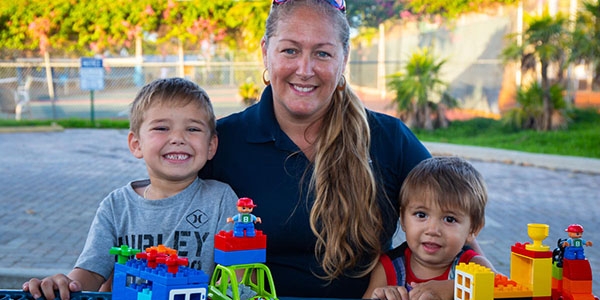Hurricane Ian Struck Florida as a Powerful Category 4 Storm
Hurricane Ian was one of the strongest hurricanes to make landfall on the west coast of the Florida peninsula, bringing with it life-threatening winds, storm surges and flash flooding. Save the Children’s emergency response team worked to meet the most urgent needs of children and families living in the areas hardest hit by powerful Hurricane Ian. In addition to providing critical supplies to children and families, we also worked with evacuation shelters to protect children’s safety and mental well-being.
Make a one-time donation to the Children's Emergency Fund or join Team Tomorrow to connect with the causes you care about - like the climate crisis - through your monthly donation.
1. How have children and families be impacted by Hurricane Ian?
2. What was the path of Hurricane Ian?
3. How is the climate crisis impacting children?
4. What impact did Hurricane Michael and Hurricane Irma have on the Gulf Coast?
5. How does Save the Children respond to the needs of children and families impacted by hurricanes?
6. How is Save the Children responding to Hurricane Ian?
7. What can I do to help children and families impacted by hurricanes?


Hurricane Ian’s catastrophic winds and flood-inducing rains are putting Florida children at great risk, threatening their homes, schools and communities.
"Children are always among the most vulnerable when disaster strikes, and our thoughts and hearts go out to kids and families in the pathway of this dangerous storm," said Barbara Ammirati, head of Save the Children’s Hurricane Ian response team.
"With hundreds of thousands of people under mandatory evacuation orders, we hope people are able to safely return to their homes very soon. But while children and families are displaced during this crisis, Save the Children will be working to ensure children are safe and help them recover, both in the immediate aftermath of Hurricane Ian and long-term."

After making landfall along the southwestern coast of Florida as a powerful Category 4 hurricane , Hurricane Ian made landfall near Georgetown, South Carolina as a Category 1 hurricane.
After sweeping parts of the Carolinas and Virginia with heavy rain on Saturday, the storm produced smaller amounts of precipitation in parts of West Virginia and Maryland into Sunday morning.

Severe weather events can destroy or disrupt infrastructure critical to children’s well-being, including schools, health facilities and transportation.
While climate change affects people everywhere, those who have contributed the least to the crisis—children, those in poverty, and future generations—are the most affected.
Extreme temperatures leave many families living in poverty with less food, less clean water, lower incomes and worsening health.

The strongest storm on record to ever hit the Florida Panhandle, Hurricane Michael struck in 2018 with 155 mph winds. The deadly storm ripped many children from the lives they once knew and damaged or destroyed many child care and early learning centers across the Panhandle.
Save the Children provided child care and early learning centers with supplies, funding and support to help them reopen as soon as possible.
Our teams also worked with communities, early learning networks and university partners to deliver its social and emotional recovery programs, including Journey of Hope and HEART, which help children and caregivers understand and cope with the stress, fear, loss and trauma that can come in the wake of a disaster like Hurricane Michael and Hurricane Irma.

As the national leader in protecting children in emergencies, Save the Children has been supporting children’s most critical needs in emergencies along the Gulf Coast since 2005, including Hurricanes Irma and Michael.
Our response efforts prioritize the needs of children and families in the following ways
We get critical family supplies – like diapers and wipes, cribs, strollers, infant washbasins and hygiene kits – into the hands of moms, dads and caregivers who need them most after disaster strikes.
We set up safe play areas in evacuation shelters – called child-friendly spaces – where kids can be kids again, express themselves and begin to cope, while their parents can rest, get help and start their family’s recovery.
We make sure kids have access to safe, quality early education after emergencies, providing child care centers and preschools with supplies, funding and support to help them reopen quickly.
We build kids and families’ resilience through social and emotional support.

With emergency supplies pre-positioned ahead of the storm, Save the Children staff were well equipped to deliver essential, child-focused items to Florida kids and families who need them most – including water, hygiene kits, diapers, wipes, portable cribs and more.
We’re planning to support the rapid reopening of an estimated 300 local childcare centers, making sure kids have access to safe, quality early education.
We are also communicating with local education partners in Florida, and stands ready to help restore child care and early learning centers that were impacted by Hurricane Ian.

With your support, Save the Children is there before, during and after an emergency. Working together, we help communities become more resilient so that each time a crisis happens they are stronger, more likely to survive and able to recover more quickly. Your support today helps make this possible.
By contributing to our Children's Emergency Fund, you will help our teams deliver essential items including water, hygiene kits, diapers and other life-saving supplies.
Updated: November 3, 2022

